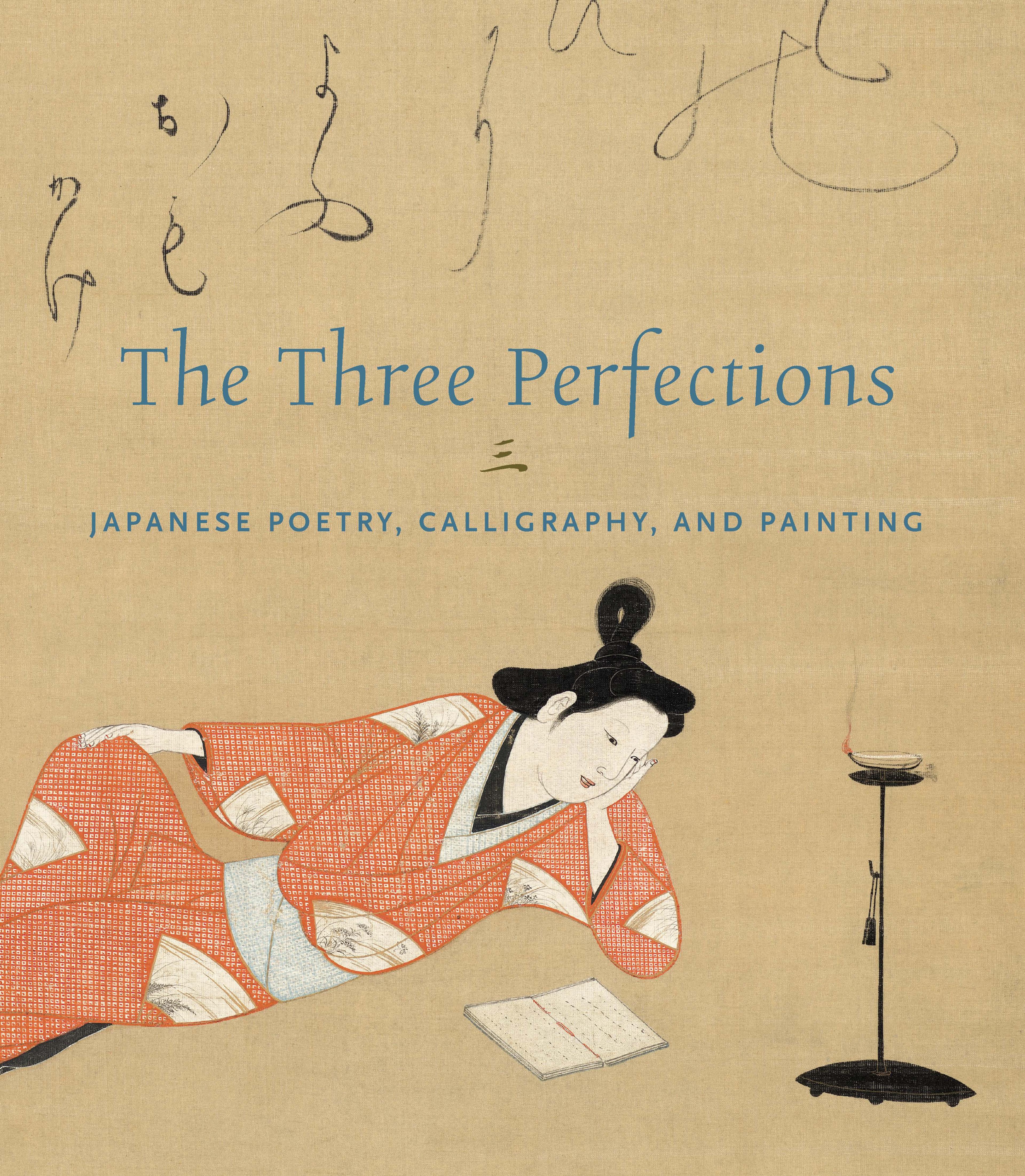Poems about Neighbors, from Japanese and Chinese Poems to Sing (Wakan rōeishū), one of the “Tatsuta Fragments” (Tatsuta-gire)
Excerpted from a lengthy handscroll, this calligraphy features five Chinese couplets and a waka (thirty-one-syllable poem) on the theme of neighbors. All are derived from Japanese and Chinese Poems to Sing, compiled in the 1010s by the courtier-poet Fujiwara no Kintō.
The poems gradually transition from standard to cursive kanji, concluding at left with the waka, which is written in kana. The waka reads:
君がやと わがやと分ける かきつばた
うつろはん時 みむ人もがな
Separating your garden
from my house’s garden—
irises—
but will anyone see them
before they start to fade?
—Trans. John T. Carpenter
The poems gradually transition from standard to cursive kanji, concluding at left with the waka, which is written in kana. The waka reads:
君がやと わがやと分ける かきつばた
うつろはん時 みむ人もがな
Separating your garden
from my house’s garden—
irises—
but will anyone see them
before they start to fade?
—Trans. John T. Carpenter
Artwork Details
- 伝源家長筆 『和漢朗詠集』 龍田切
- Title: Poems about Neighbors, from Japanese and Chinese Poems to Sing (Wakan rōeishū), one of the “Tatsuta Fragments” (Tatsuta-gire)
- Artist: Traditionally attributed to Minamoto Ienaga (Japanese, 1170(?)–1234)
- Period: Kamakura period (1185–1333)
- Date: 13th century
- Culture: Japan
- Medium: Hanging scroll; ink on decorated paper
- Dimensions: Image: 8 7/8 × 14 11/16 in. (22.5 × 37.3 cm)
Overall with mounting: 43 1/2 × 19 7/8 in. (110.5 × 50.5 cm)
Overall with knobs: 43 1/2 × 21 11/16 in. (110.5 × 55.1 cm) - Classification: Calligraphy
- Credit Line: Mary and Cheney Cowles Collection, Gift of Mary and Cheney Cowles, 2023
- Object Number: 2023.583.3
- Curatorial Department: Asian Art
More Artwork
Research Resources
The Met provides unparalleled resources for research and welcomes an international community of students and scholars. The Met's Open Access API is where creators and researchers can connect to the The Met collection. Open Access data and public domain images are available for unrestricted commercial and noncommercial use without permission or fee.
To request images under copyright and other restrictions, please use this Image Request form.
Feedback
We continue to research and examine historical and cultural context for objects in The Met collection. If you have comments or questions about this object record, please contact us using the form below. The Museum looks forward to receiving your comments.
